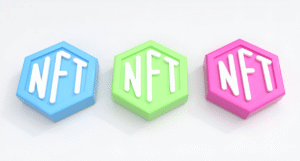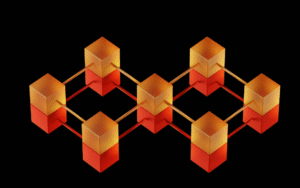How Much Is The NFT Market Worth: Current Valuation & Trends

The non-fungible token (NFT) market has experienced remarkable volatility since its mainstream emergence. From jaw-dropping individual sales to periods of significant contraction, understanding the true value of this digital asset class requires looking beyond headline figures to examine underlying trends and infrastructural growth.
Historical Market Performance
The NFT market’s most explosive growth occurred in 2021, when trading volume surged from approximately $340 million in 2020 to an astonishing $25 billion. This 7,300% increase represented one of the fastest-growing financial phenomena in modern history.
According to DappRadar’s blockchain analytics, the subsequent correction saw trading volumes decline by over 70% through 2022 and into 2023, with stabilization beginning in late 2023 and a modest recovery emerging through 2024.
Current Market Valuation
As of early 2025, the total NFT market capitalization stands at approximately $14 billion, representing the combined value of all major NFT collections across primary marketplaces. However, this figure requires context to be properly understood.
The market now reflects a fundamentally different composition than during the 2021 peak. While profile picture (PFP) collections once dominated with speculative trading, today’s valuation is increasingly distributed across gaming assets, digital real estate, music rights, and utility-focused tokens that provide tangible benefits beyond speculation.
The maturation of the NFT market is evident in the rising percentage of value residing in blue-chip collections with established communities and developed ecosystems. Projects that have survived the market correction typically demonstrate stronger fundamentals than many that emerged during the height of the boom.
Institutional Investment Impact
A significant shift in market composition comes from institutional participation. Major brands from Nike to Disney have developed NFT strategies that have contributed an estimated $3.4 billion to the overall market value. These enterprise-level implementations focus less on speculative collecting and more on customer engagement, digital ownership verification, and loyalty program enhancement.
Several financial institutions have also created NFT-based investment products, allowing traditional investors exposure to this asset class without direct token ownership. At NFT Marketo, we’ve tracked how these institutional developments have provided a stabilizing effect on the broader market by introducing more predictable capital flows.
Market Segments Analysis
When analyzing NFT market worth, understanding segment distribution provides crucial insights:
The art segment, once the most visible face of NFTs, now represents approximately 28% of total market value. Gaming and metaverse assets have grown to comprise nearly 35% of market capitalization, reflecting the increasing utility focus of successful projects.
Digital collectibles maintain approximately 22% of market value, while music NFTs, domain names, and various utility tokens make up the remaining 15%.
This diversification suggests a maturing market where value derives from multiple use cases rather than purely speculative collecting.
Trading Volume vs. Market Capitalization
While trading volume once served as the primary metric for NFT market health, market capitalization now provides a more accurate representation of the ecosystem’s true value. Many high-quality NFTs have transitioned from frequent trading to longer holding periods as owners recognize their long-term potential.
Daily global NFT trading volume currently averages approximately $38 million, significantly below 2021 peaks but showing remarkable stability compared to the volatile swings of previous years.
Geographic Distribution of Value
The NFT market has also experienced significant geographical diversification. While North America and Western Europe initially dominated adoption, substantial growth in Southeast Asia, particularly in countries like South Korea, Singapore, and the Philippines, has created a more globally distributed market value.
Gaming-focused NFTs have found particular resonance in markets where play-to-earn models provide meaningful economic opportunities. This geographical expansion has contributed approximately $2.7 billion to the total market capitalization over the past two years.
Future Valuation Projections
Market analysts project the NFT ecosystem to reach a potential valuation of $24-30 billion by 2027, dependent on several key factors:
Regulatory frameworks continue to evolve worldwide, with clearer guidelines potentially unleashing institutional investment that remains sidelined due to compliance concerns.
Technological improvements, particularly in layer-2 scaling solutions and cross-chain operability, promise to reduce transaction costs and environmental concerns that have limited market growth.
Integration with traditional industries beyond entertainment, such as real estate, education, and healthcare, presents substantial growth vectors that remain largely untapped.
Conclusion
The NFT market’s current $14 billion valuation represents a settled reality after the extreme boom-bust cycle of 2021-2022. Unlike those frenzied days of pure speculation, today’s market value reflects a maturing ecosystem increasingly focused on utility, sustainable growth, and real-world applications.
For creators, collectors, and investors seeking to understand this complex market, the raw valuation number tells only part of the story. The distribution of that value across segments, geographies, and use cases provides a much more nuanced picture of where the true worth of NFTs resides in today’s digital economy.
At NFT Marketo, we continue to track these evolving trends to provide our clients with the most current market intelligence as the NFT ecosystem continues its evolution from speculative bubble to fundamental digital infrastructure.





